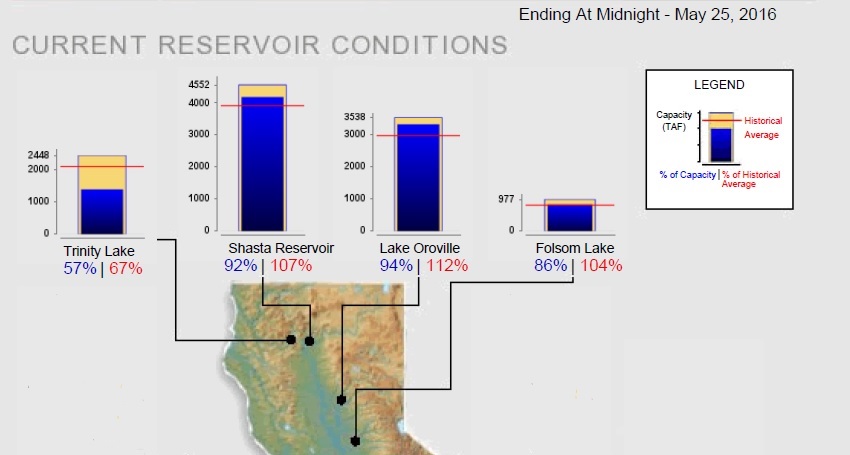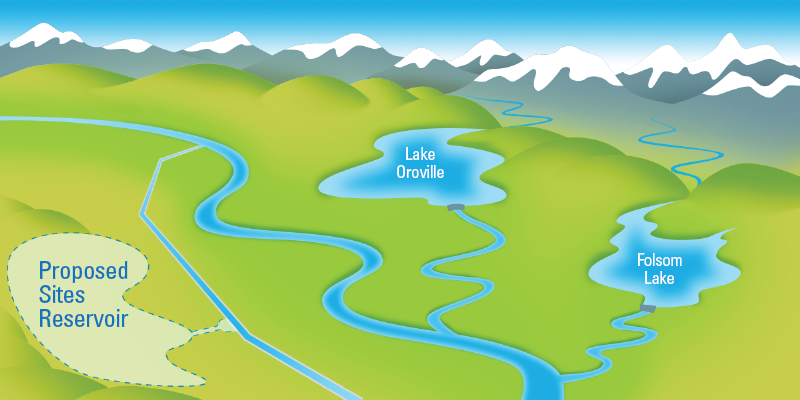The snowpack in Northern California this year was good. This, coupled with rain at lower elevations, led to Northern California reservoirs filling this year for the first time in five years and water spilling from certain reservoirs. As a result, Lake Shasta is now at 107% of historical average, Lake Oroville is 112% and Folsom Lake is 104% as shown on this plot.

With full reservoirs in Northern California for the first time in five years, you would think that the operators and regulators for these projects would take the opportunity to relax after four challenging years and let the projects operate to serve multiple beneficial uses, including cities and rural communities, farms, fish and birds. This includes the opportunity to spread water over land for irrigation, bird habitat, food for fish and recharging groundwater, as well as serving water in other parts of the state served by the projects. For successful water management in California, we need to take advantage of years when we have water available so we can be better prepared for dry years.
Instead of relaxing and letting the water system work for the benefit of these different beneficial purposes, many of the regulators seem to be looking backward and holding on to the past several dry years by constraining water rather than letting the water system operate as it was intended. Unfortunately, these regulators seem to narrowly focus on one factor affecting one species of fish under their purview rather than looking at the bigger picture to serve all these purposes. As we have seen over the past several decades, the more the project operations are constrained, the more fish seem to suffer and decline.
There is a complex system of rules that govern project operations. Now is the time to let the project operators do their job and manage the water system for the benefit of these various beneficial purposes. In a year with full reservoirs, let the water flow and serve these various purposes. Constraining water use will only lead to the waste of water later this year. In 2016 we could even have more water (1 million acre-feet) available in reservoirs in Northern California if Sites Reservoir were in place.




